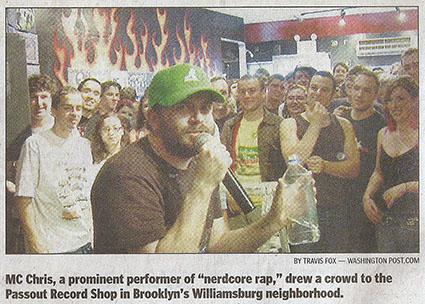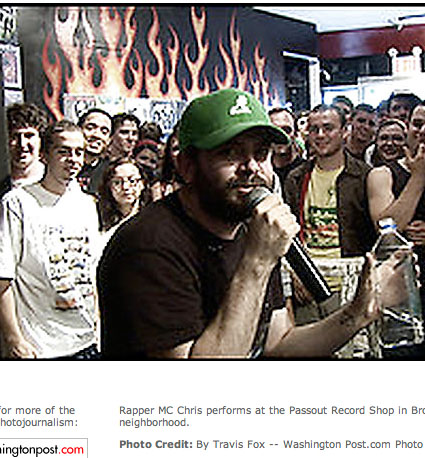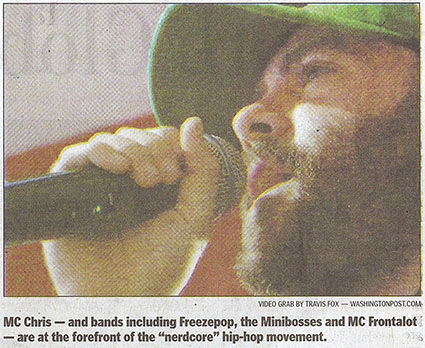 For awhile now, many of you have written in the comments, and to me privately, about just how "photojournalism is dead", or some variation thereof. In many cases, you're right. However, for those who set their own terms, specify what they are (and are not) willing to accept for any given assignment, and otherwise chart their own editorial course, work can be highly satisfying and lucrative.
For awhile now, many of you have written in the comments, and to me privately, about just how "photojournalism is dead", or some variation thereof. In many cases, you're right. However, for those who set their own terms, specify what they are (and are not) willing to accept for any given assignment, and otherwise chart their own editorial course, work can be highly satisfying and lucrative.
In a departure from my normal musings, I am presenting, with permission, highly regarded attorney and friend of many a photographer, Ed Greenberg's thoughts on this subject, and I commend it to you for serious consideration. Ed uses, for example, the recent events of New York where a steampipe burst, but the news outlets thought (and rightly so) that it just might be a terrorist incident, and as such, turned to "citizen journalists" for coverage. As a part of the discourse, where Ed's commentary and criticism of these activities by news outlets appears, I've presented the evidence of those points, and penned the sidebar commentary on this "new world order", created by (among others) Reuters, who has adopted the citizen journalist model.
Wednesday, July 18, 2007, ought to go down as the date that traditional bread and butter, editorial photojournalism manifested to anyone who chooses to see, that the profession is on life support. For years my mantra has been, “You can’t compete against free.” The traditional employers and clients of photojournalists have been newspapers, magazines and television who, I have argued, have been phasing you out of your livelihood.
For articulating that point of view, with a considerable amount of vigor, I have been vilified and attacked professionally and personally. Many well intentioned shooters have suggested that photographers ought “partner” with their traditional clients in order to assure their existence in the new media economy. That position is in my view naïve and tantamount to economic suicide.
So now a massive steam explosion occurs in Gotham’s midtown, super busy district during the middle of a work day some 75 yards from my former office. The resulting 400 degree steam geyser rising hundreds of feet into the air, just one block from Grand Central Station and literally on top of several subway lines, results in city blocks being closed off, subways turned off, a cacophony of emergency sirens continuing through today, one death, thirty injuries and of course thousands of photo opportunities.
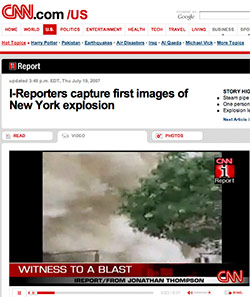
Within seconds to minutes of the explosion the local television channels were actively soliciting video tape, cell phone footage, still imagery and equivalents from the public for the expressed purpose of reportage. Websites, particularly gothamist.com featured “live coverage” employing un-credited “live” footage of the steam geyser. The publisher was on NPR this morning expounding with great clarity how she was effectively able to beat out the coverage of the New York network affiliates by using images freely sent to her. The images were and are more than adequate (take a look). The site paid zilch, zero, nada for the footage.
The local Fox affiliate virtually begged on air for free images and gave instructions how to download or otherwise get the images to Fox for broadcast. Fox was not alone in the media world. We are unable to ascertain the number of images which ran in the NY Post, Daily News and NY Times which were shot by the many “civilian” employees who were evacuated from their offices and hit the streets with cellular phones held high over their heads in camera mode.
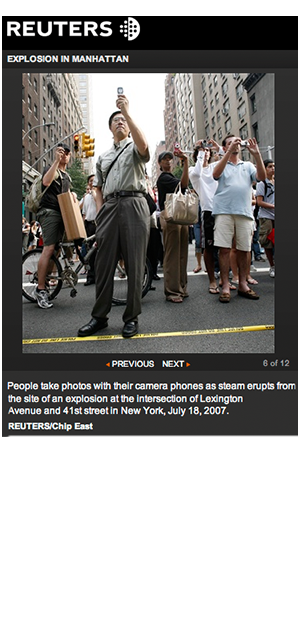
Those print photo credits which do appear may be misleading as one or more agencies no doubt purchased images from unsuspecting amateurs outright. This practice pre-dates the oldest reader of this post. We do note that of the nine photos which appear in the tabloid NY Post of Thursday, July 19, 2007, not a single one bears a NY Post photo credit nor indicates that the shooter has any staff affiliation with The Post.
My confidential and unimpeachable photo source at the NY Post just told me that:
1. No staff photography (of the 9 subject images) was used;
2. Most images were "civilian", others were civilian purchased/acquired by agents/agencies;
3. Citizen shooters and journalists are now considered part of the newsgathering process and especially when lots of images from different sources flood the newsroom, little to no fact checking takes place. I inquired about how the use of particular lenses could “accurately” distort a news event and when it’s an amateur photo - how would the publication know? He/she laughed and laughed and laughed. "Hey Greenberg, are you f**king kidding me?"
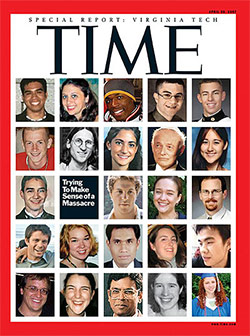
Client Adrienne DeArmas, working for Time Magazine on the Virginia Tech massacre story, was unable to procure/arrange for the creation of images that could compete with the Myspace and Facebook images of the students killed, their friends, families and teachers. The cover of TIME that week was a grid of said photos, with not one professionally shot image among them.
The days when a significant number of skilled, staff editorial photographers were needed by newsgathering publications are over. Those of you who still believe that you can “partner” with your clients/enemies in order to assure your continued business existence are, with all due respect, hopeless. With no intention to disrespect any of the fine photojournalists who still work staff – many of whom we represent – the days of being able to support you and your family by hitting the streets and covering stories for newspapers are over.
Your clients beat you at your own game. You willingly cede your intellectual property rights to your clients who, simultaneously and with great calculation, enlisted the willing support of civilians who “charge” free. They have effectively rendered you obsolete.
Ironically, it is the news outlets and not the photographers who have truly mastered the art of digital photography. They have effectively rendered you obsolete.
You need to establish alternative and creative income streams. You need to bring something to the editorial table that Bernie the dentist who shoots for fun can’t. You need to treat this business as a business. You can’t let yourself be bullied into giving up your rights in a pointless effort to compete with “free”. You must be a business person first and an artist second. The handwriting has been on the wall for years. This episode is reflective of yet another battle lost in a war against photographers that was won by your friendly “clients” years ago.
I will be pleased to appear at any legitimate venue to discuss or debate any teacher, professor, photographer or photo professional who trains and represents that there is an economic future in photojournalism. Will some truly great photojournalists survive? Absolutely. No doubt. Does it however, make any economic sense to represent to any student or newbie that he has a realistic chance of being able to support a family at a middle class life style now and in the future by shooting traditional photojournalism? No way.
I am pleased to consider rational opposing views.
Very truly yours,
EDWARD C. GREENBERG
Edward C. Greenberg, PC
570 Lexington Ave.
17th Floor
NYC NY 10022
212 697-8777
ecglaw@aol.com
Please post your comments by clicking the link below. If you've got questions, please pose them in our
Photo Business Forum Flickr Group Discussion Threads.
[More: Full Post and Comments]
![]() Please join me in welcoming Photoshelter as my first advertiser on Photo Business News & Forum.
Please join me in welcoming Photoshelter as my first advertiser on Photo Business News & Forum. For awhile now, many of you have written in the comments, and to me privately, about just how "photojournalism is dead", or some variation thereof. In many cases, you're right. However, for those who set their own terms, specify what they are (and are not) willing to accept for any given assignment, and otherwise chart their own editorial course, work can be highly satisfying and lucrative.
For awhile now, many of you have written in the comments, and to me privately, about just how "photojournalism is dead", or some variation thereof. In many cases, you're right. However, for those who set their own terms, specify what they are (and are not) willing to accept for any given assignment, and otherwise chart their own editorial course, work can be highly satisfying and lucrative.  Within seconds to minutes of the explosion the local television channels were actively soliciting video tape, cell phone footage, still imagery and equivalents from the public for the expressed purpose of reportage. Websites, particularly gothamist.com featured “live coverage” employing un-credited “live” footage of the steam geyser. The publisher was on NPR this morning expounding with great clarity how she was effectively able to beat out the coverage of the New York network affiliates by using images freely sent to her. The images were and are more than adequate (take a look). The site paid zilch, zero, nada for the footage.
Within seconds to minutes of the explosion the local television channels were actively soliciting video tape, cell phone footage, still imagery and equivalents from the public for the expressed purpose of reportage. Websites, particularly gothamist.com featured “live coverage” employing un-credited “live” footage of the steam geyser. The publisher was on NPR this morning expounding with great clarity how she was effectively able to beat out the coverage of the New York network affiliates by using images freely sent to her. The images were and are more than adequate (take a look). The site paid zilch, zero, nada for the footage. Those print photo credits which do appear may be misleading as one or more agencies no doubt purchased images from unsuspecting amateurs outright. This practice pre-dates the oldest reader of this post. We do note that of the nine photos which appear in the tabloid NY Post of Thursday, July 19, 2007, not a single one bears a NY Post photo credit nor indicates that the shooter has any staff affiliation with The Post.
Those print photo credits which do appear may be misleading as one or more agencies no doubt purchased images from unsuspecting amateurs outright. This practice pre-dates the oldest reader of this post. We do note that of the nine photos which appear in the tabloid NY Post of Thursday, July 19, 2007, not a single one bears a NY Post photo credit nor indicates that the shooter has any staff affiliation with The Post. Client Adrienne DeArmas, working for Time Magazine on the Virginia Tech massacre story, was unable to procure/arrange for the creation of images that could compete with the Myspace and Facebook images of the students killed, their friends, families and teachers. The cover of TIME that week was a grid of said photos, with not one professionally shot image among them.
Client Adrienne DeArmas, working for Time Magazine on the Virginia Tech massacre story, was unable to procure/arrange for the creation of images that could compete with the Myspace and Facebook images of the students killed, their friends, families and teachers. The cover of TIME that week was a grid of said photos, with not one professionally shot image among them.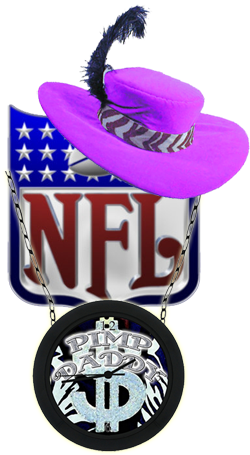 Your backside is no longer your own. You must do with it what your new pimp tells you to do...that is...if you wish to work the turf that the National Football League owns. You wanna turn a trick on the sidelines of a game? You gotta give your due to your overlord.
Your backside is no longer your own. You must do with it what your new pimp tells you to do...that is...if you wish to work the turf that the National Football League owns. You wanna turn a trick on the sidelines of a game? You gotta give your due to your overlord.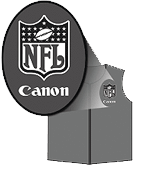 The article goes on to report "But some of the NFL's other actions have horrified Alex Marvez, president of the Pro Football Writers Association and a South Florida Sun-Sentinel reporter. He winces at the new rule requiring photographers to wear red vests with small Canon and Reebok logos. Mr. Marvez calls the idea of using working press members as advertising vehicles "really alarming." Neither company is paying a specific fee for the vests, but Canon Inc. is an official sponsor of the league (it pays a rights fee to be associated with the NFL) and Reebok International Ltd., owned by Adidas AG, is a league licensee (it makes merchandise with NFL logos, including jerseys, pants and photo vests)." (as shown above left).
The article goes on to report "But some of the NFL's other actions have horrified Alex Marvez, president of the Pro Football Writers Association and a South Florida Sun-Sentinel reporter. He winces at the new rule requiring photographers to wear red vests with small Canon and Reebok logos. Mr. Marvez calls the idea of using working press members as advertising vehicles "really alarming." Neither company is paying a specific fee for the vests, but Canon Inc. is an official sponsor of the league (it pays a rights fee to be associated with the NFL) and Reebok International Ltd., owned by Adidas AG, is a league licensee (it makes merchandise with NFL logos, including jerseys, pants and photo vests)." (as shown above left).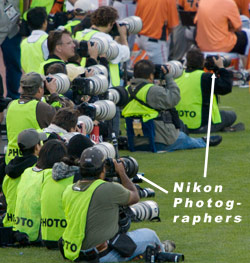 To the left is the sidelines at a recent MLB game that I made. Aside from seeing the horrible yellow, what I see is where sports marketing person could say, during the game when touring a potential sponsor - "See all those blank yellow vests down there. That blank space could be instead have your logo, we make them wear those....". Well, now, sections of the vest have sponsor logos. Soon, each vest could well look like a NASCAR car, with major and minor logos. I see atleast two photographers with Nikon gear, just on this side of the field.
To the left is the sidelines at a recent MLB game that I made. Aside from seeing the horrible yellow, what I see is where sports marketing person could say, during the game when touring a potential sponsor - "See all those blank yellow vests down there. That blank space could be instead have your logo, we make them wear those....". Well, now, sections of the vest have sponsor logos. Soon, each vest could well look like a NASCAR car, with major and minor logos. I see atleast two photographers with Nikon gear, just on this side of the field.